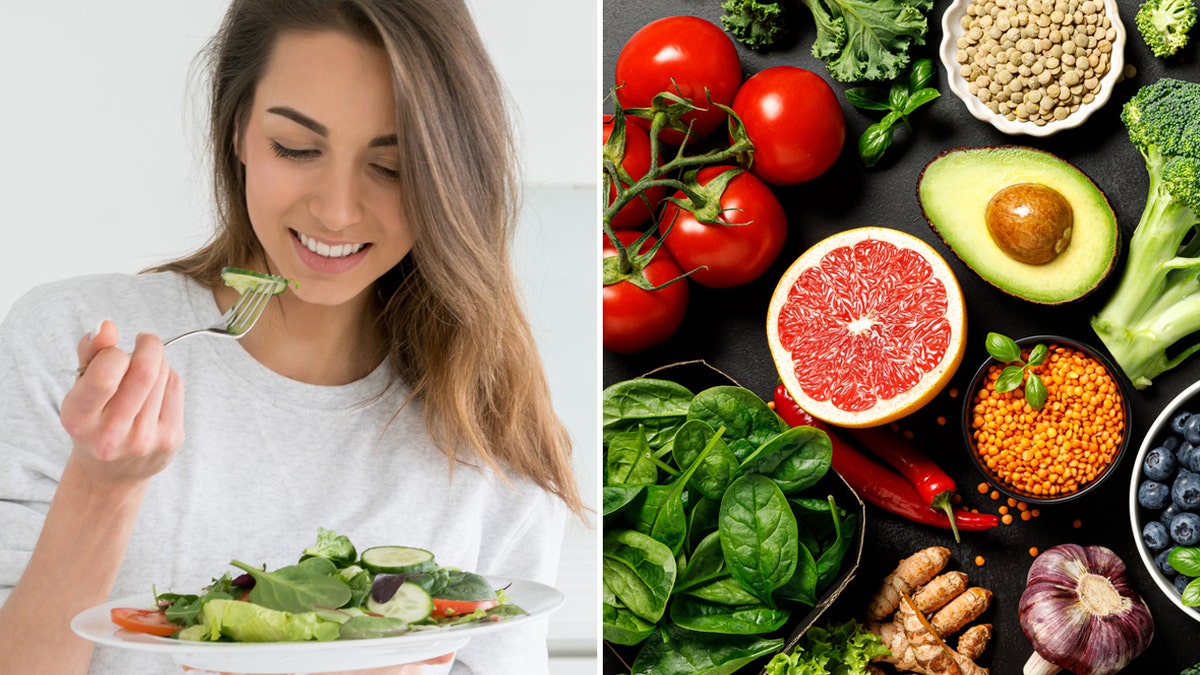Fox News Flash top headlines for September 6
Fox News Flash top headlines are here. Check out what's clicking on Foxnews.com.
For those who are looking to improve their health through nutrition, some experts believe superfoods could come to the rescue.
The Centers for Disease Control and Prevention (CDC) has published a list of "powerhouse foods and vegetables" (PFV), which it defines as the "foods most strongly associated with reduced chronic disease risk."
These foods have been generally described as "green leafy, yellow/orange, citrus and cruciferous items."
To qualify for the list, foods had to provide an average of 10% or more daily value per 100 kilocalories (100,000 calories) of 17 key nutrients — potassium, fiber, protein, calcium, iron, thiamin, riboflavin, niacin, folate, zinc, and vitamins A, B6, B12, C, D, E and K.

The CDC defines "powerhouse foods and vegetables" (PFV) as the "foods most strongly associated with reduced chronic disease risk." (iStock)
After calculating the nutrient density score for a total of 47 foods, the researchers came up with the following list of 41 foods that qualify as PFVs, in order from highest to lowest nutrient density score:
- Watercress
- Chinese cabbage
- Chard
- Beet green
- Spinach
- Chicory
- Leaf lettuce
- Parsley
- Romaine lettuce
- Collard green
- Turnip green
- Mustard green
- Endive
- Chive
- Kale
- Dandelion green
- Red pepper
- Arugula
- Broccoli
- Pumpkin
- Brussels sprout
- Scallion
- Kohlrabi
- Cauliflower
- Cabbage
- Carrot
- Tomato
- Lemon
- Iceberg lettuce
- Strawberry
- Radish
- Winter squash (all varieties)
- Orange
- Lime
- Grapefruit (pink and red)
- Rutabaga
- Turnip
- Blackberry
- Leek
- Sweet potato
- Grapefruit (white)
There were some limitations associated with this study.
Some nutrient-dense items may have been overlooked, according to the CDC’s discussion of the findings.
It was also not possible to include phytochemical data — which are chemical compounds produced by plants that can increase nutritional value — when calculating the nutrient density score for each food.
Future research is needed to identify specific nutritious diets and to confirm the health outcomes of eating a diet rich in PFVs, the study authors noted.
Tanya Freirich, a registered dietitian nutritionist in Charlotte, North Carolina, who practices as The Lupus Dietitian, said she supports the CDC’s list of recommended superfoods.

Watercress holds the No. 1 spot on the CDC's list of powerhouse foods. (iStock)
"It's great that we are being specific about ‘powerhouse’ foods to raise awareness of the importance of eating fresh fruits and vegetables," she told Fox News Digital.
"All vegetables and fruits contain nutrients, vitamins and antioxidants," she added. "It's important to eat a variety of them if you can."
There are some very healthy foods, however, that didn't make the list, Frierich noted.
"All vegetables and fruits contain nutrients, vitamins and antioxidants. It's important to eat a variety of them if you can."
"These foods did not meet the criteria in the study, but they should still be a part of your diet if you enjoy eating them and can access them," she said.
"Garlic and onion, in particular, are part of the allium family and provide a host of other benefits that you would not find in one of the fruits or vegetables on the list."

Pumpkin foods also made the CDC's superfoods list. (iStock)
One food on the list, grapefruit, could interfere with many commonly prescribed medications, Frierich also pointed out.
"While the list is helpful in some ways, it is not the only thing to consider in making choices for a healthy diet," she said.
"Every individual person needs a slightly different dietary approach."
CLICK HERE TO SIGN UP FOR OUR HEALTH NEWSLETTER
For people who like the foods on the CDC’s list, can find them in the grocery store and are able to fit them into the food budget — they can and should eat them, Frierich said.
"If not, prioritize eating a variety of fresh and frozen produce as part of your overall diet," she said. "Aim to fill half your plate with vegetables when possible."
CLICK HERE TO GET THE FOX NEWS APP
For those who face financial difficulties and/or can’t fit the foods on the list into their budget, Frierich said that frozen or fresh produce can be part of a healthy diet.
To read more pieces in Fox News Digital's "Be Well" series, click here.






















